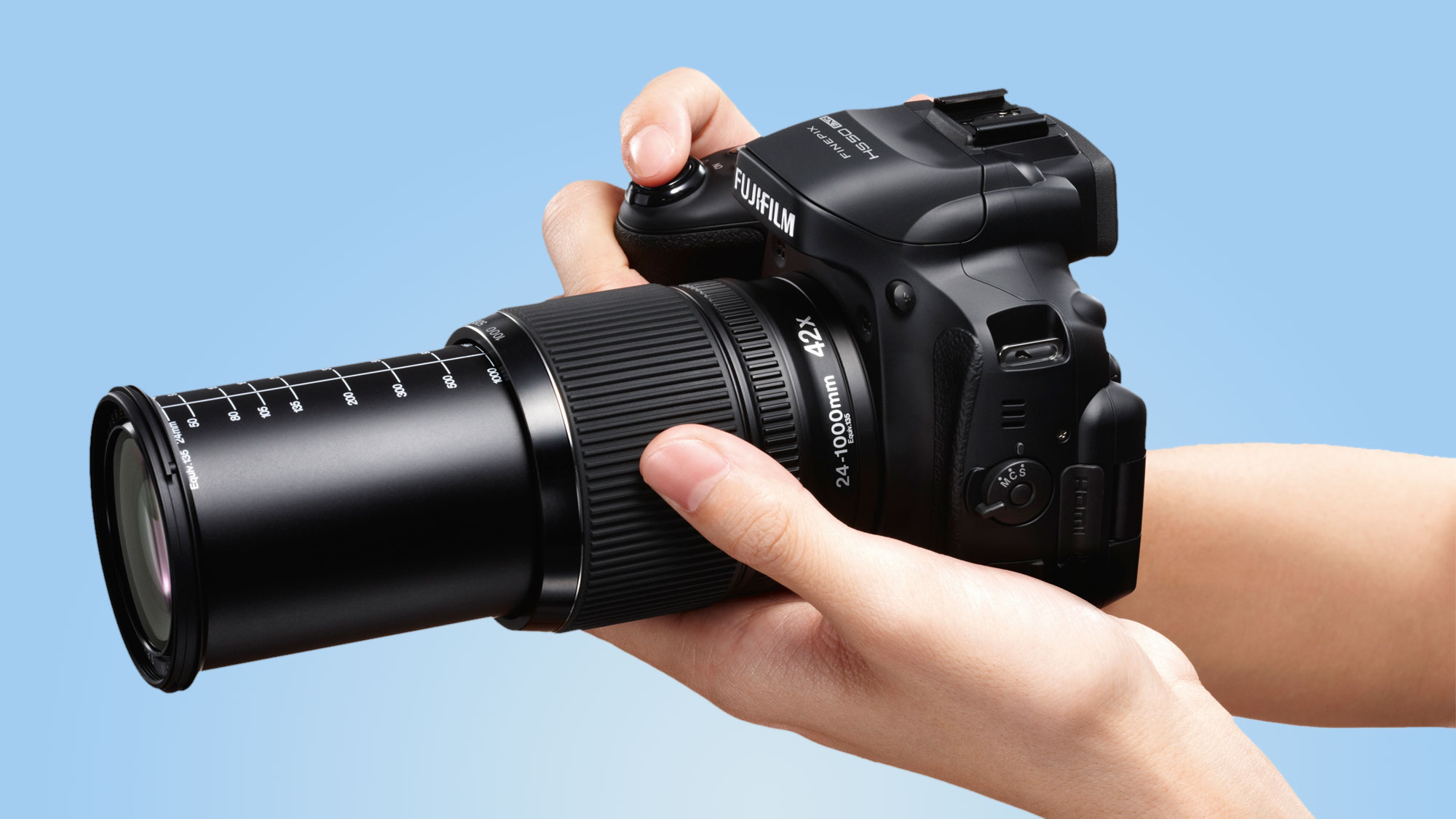Why you can trust TechRadar
Despite the emergence of compact system cameras, which many people predicted would dent the sales of bridge cameras, models similar to the Fujifilm HS50 EXR continue to sell well, offering a huge zoom range that is far beyond the realms of a budget DSLR/CSC and standard kit lens.
These types of cameras are ideal for those who want to travel relatively light while still having the flexibility of being able to shoot a wide range of subjects.
Over the years, bridge cameras have improved measurably. And while they still typically feature small sensors (although the Fuji HS50 EXR's 1/2-inch sensor is larger than some), other features - such as the ability to shoot in raw format, an articulating screen and the variety of modes available - tend to make up for the cameras' other shortcomings.
Fuji remains the top seller in the bridge camera market, and is clearly keen to keep hold of that position, producing another excellently performing camera that should appeal to a wide range of users. It has enough advanced features - the ability to take full manual control, raw format shooting and so on - to appeal to the enthusiast, while also containing an excellent fully automatic option that will also attract beginners. This could be a good option for those looking to learn about photography.
Luckily, we've not been disappointed by the image quality of the Fuji HS50 EXR, with detailed and bright, punchy images in the majority of conditions. It's also excellent at keeping the image free from blur even while shooting at the full reach of the 1,000mm (35mm equivalent) telephoto optic.
We've also been impressed by the build and styling of the Fuji HS50 EXR, with its large body making it appear as a DSLR. The lens, roughly the same size as a kit optic on a DSLR, but containing a much more impressive reach, makes this a much more suitable alternative for those who don't want the bulk of a compact system camera.
The articulating screen, although disappointingly not a touchscreen, is still very useful when you want to shoot from awkward angles, fold the screen away for protection, or when shooting movies.
Using the camera's menu system, including the Quick menu, is also pretty sensible. It's a shame there's not more customisation to be enjoyed, especially with the manual focus ring, which is redundant when using autofocus. It's also true that this camera very much needs two hands to operate, and you'll struggle to make changes when shooting one-handed.
Electronic viewfinders still have a bad reputation, despite the progress that has been made in the past few years in terms of quality. The Fuji HS50 EXR's device is a solid performer, and while it's incredibly unlikely that you'll forget you're using an EVF, it's a definite improvement on those that have come before it, and it also beats the offering on its closest rival, the Canon SX50.
We liked
There's plenty to like about the Fuji HS50 EXR, but our favourite thing has to be the incredibly versatile 42x optical zoom range and the fantastic Optical Image Stabilisation technology that means that images captured at the far reach remain blur-free.
We disliked
Perhaps it's a little picky, but we'd like to see even more technology squeezed onto bridge cameras. A touchscreen and Wi-Fi, for instance, would have elevated this camera from very good to excellent.
Final verdict
For anybody looking for a high-zoom bridge camera with plenty of bang for your back, the Fuji HS50 EXR is an excellent option. Although it has a shorter zoom range than the Canon SX50 (which boasts a 50x optical zoom lens), the 24-1,000mm range should be more than enough for most users. It bests the Canon SX50 though in terms of the electronic viewfinder, so we'd be inclined to recommend this over it.
Amy has been writing about cameras, photography and associated tech since 2009. Amy was once part of the photography testing team for Future Publishing working across TechRadar, Digital Camera, PhotoPlus, N Photo and Photography Week. For her photography, she has won awards and has been exhibited. She often partakes in unusual projects - including one intense year where she used a different camera every single day. Amy is currently the Features Editor at Amateur Photographer magazine, and in her increasingly little spare time works across a number of high-profile publications including Wired, Stuff, Digital Camera World, Expert Reviews, and just a little off-tangent, PetsRadar.

